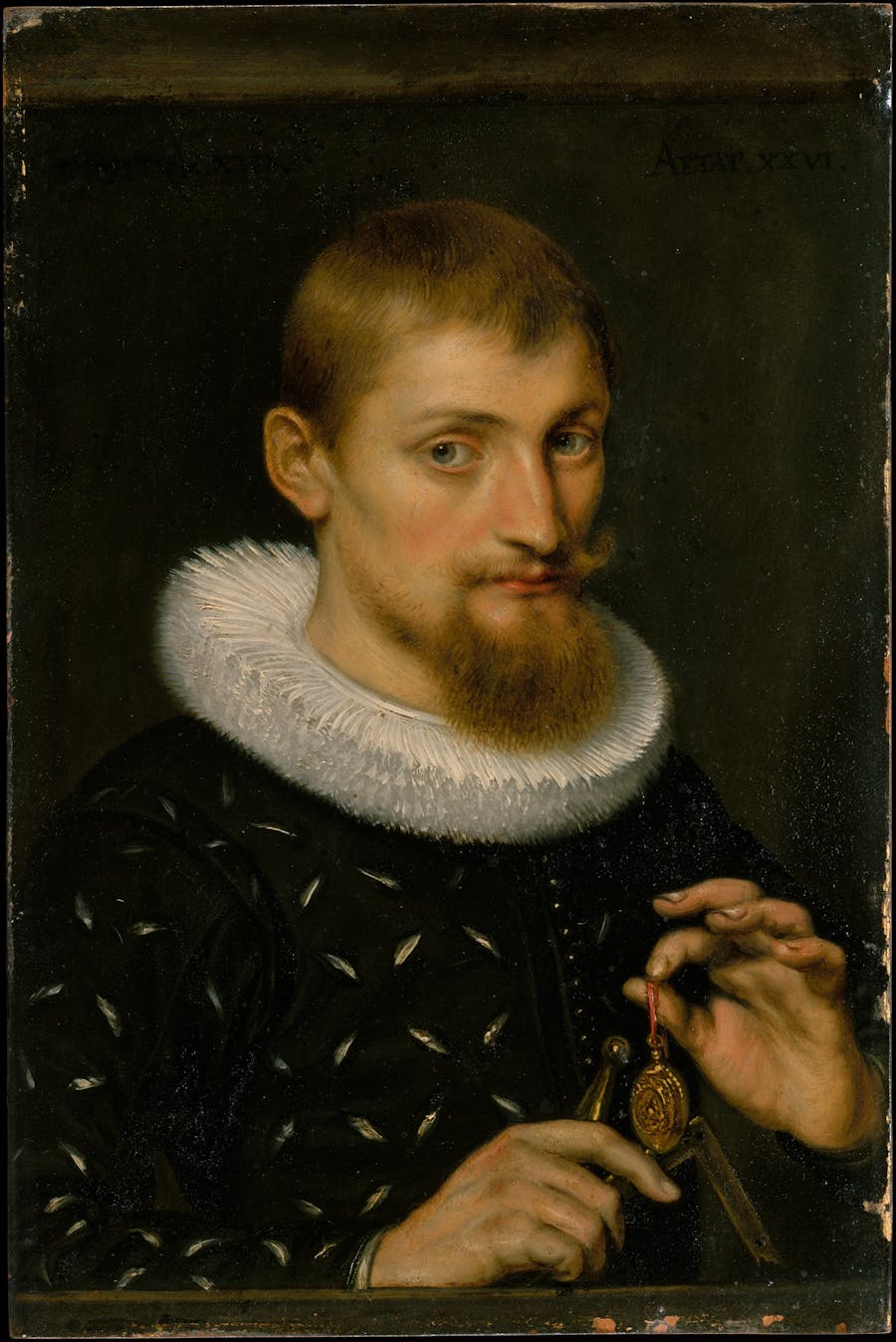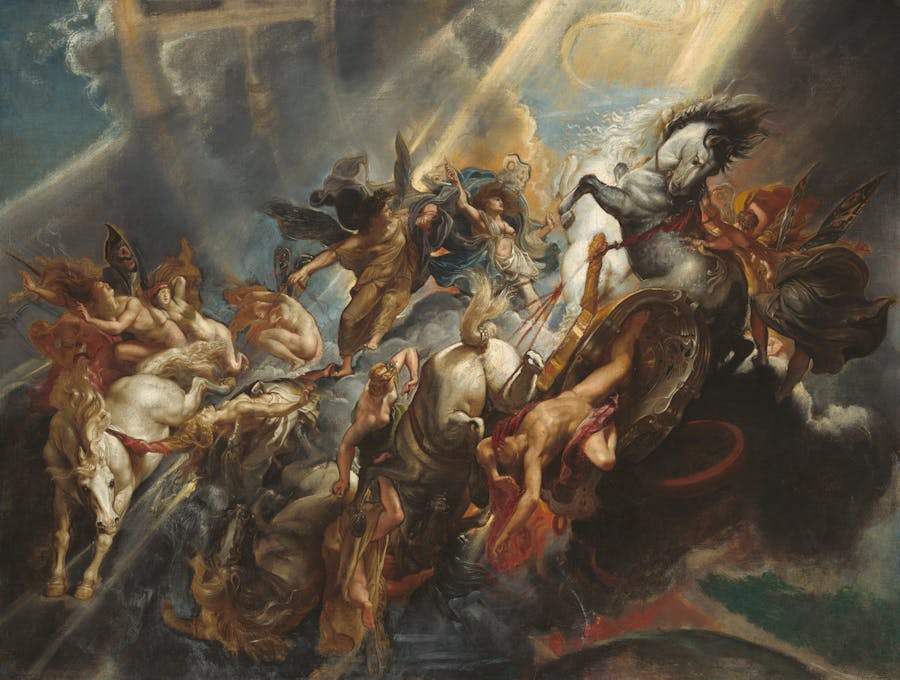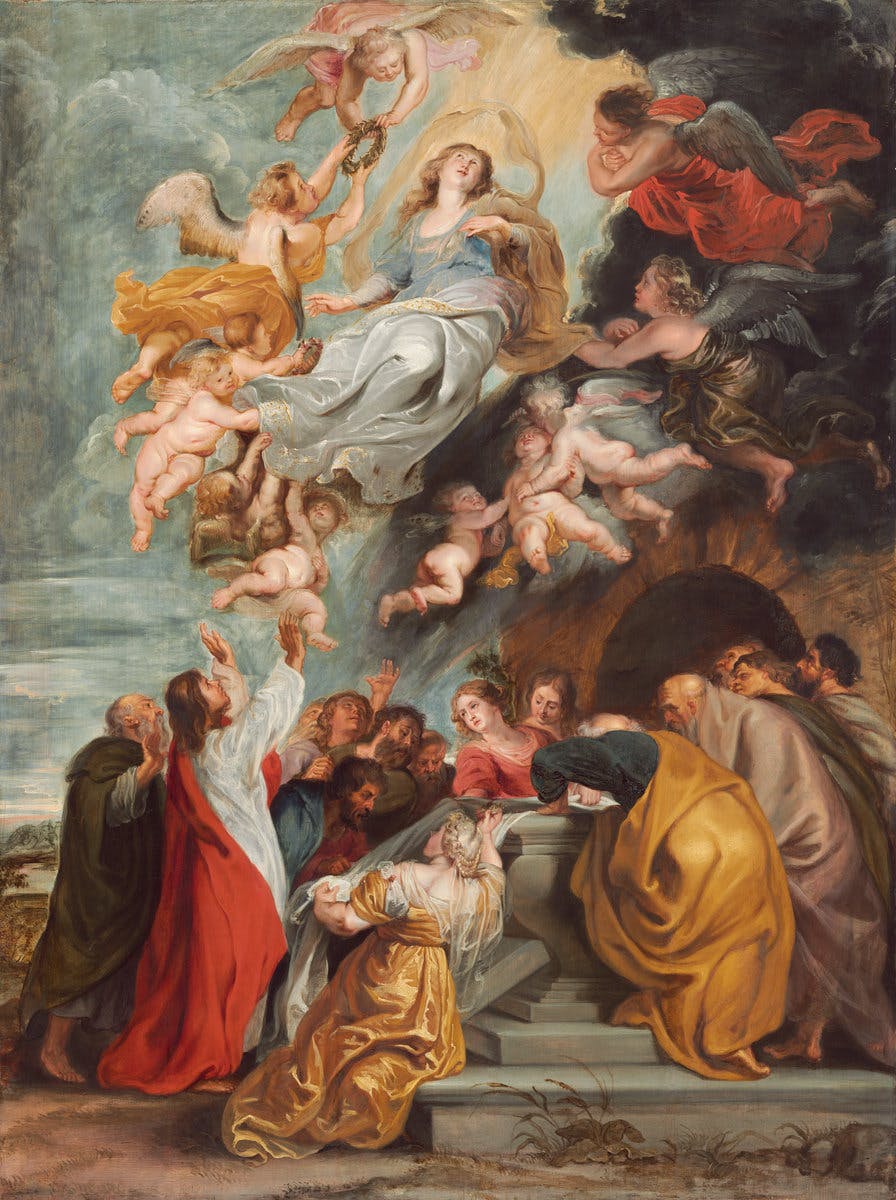Peter Paul Rubens: 5 Facts to Know
The Flemish Baroque painter was active in Antwerp in the early 17th century.
The Flemish master Peter Paul Rubens (1577-1640) is famed for his dynamic history paintings that were emblematic of the Baroque. His large-scale workshop was revered throughout Europe and he served as a court painter to Hapsburgs and Medicis. Here are five facts to know:
1. He was talented from a young age
Rubens began his artistic studies in Antwerp during the 1590s, when the city was recovering from decades of religious conflicts. His artistic talent was already discovered when he was a child, which led him to study under the master Adam van Noort, who was Antwerp's most famous artist. In 1597 he became Otto van Veen's (also known as Vaenius) apprentice, who introduced Rubens to the Italian Renaissance's figurative painting.
Related: A New Renaissance for Old Masters

Rubens lived in Antwerp for almost his entire life, where he developed his network of acquaintances, clients, friends and cultural leaders.
2. Italy was his inspiration
In 1600, Rubens went to Italy to study both the ancient and modern masters paintings, with stops in Venice, Mantua, Florence and Rome. In Venice, he was enamored with the works of Titian, Veronese and Tintoretto. In Rome, he fell in love with ancient classics and was specially taken with the paintings of contemporary master, Caravaggio.
Related: The Top 10 Stolen Paintings

In 1603, Rubens moved to Mantua, where he began painting for the court and Duke Vincenzo.
3. His studio was prolific
After spending eight years in Italy, Rubens returned to Antwerp, where he immediately received several prestigious assignments, so he decided to open his own studio where he employed many assistants.
This is one of the reasons why today we attribute thousands of works to Rubens. Even though the artist had the final decision power over every work that was produced in his studio, and probably put his own brush on every canvas, the amount of work done by Rubens varies from painting to painting.
Related: Artemisia Gentileschi: 5 Extraordinary Facts

Due to his large studio that allowed for high production, he was close friends with several kings, princes and other influential men throughout Europe. Rumor has it that his diplomatic abilities actually had an impact on the final peace negotiations between Spain and England.
4. He was a devoted family man
One of the reasons Rubens returned to his hometown from Italy in 1608 was to care for his sick mother. His father had died when Rubens was only ten years old and he had a close relationship with his mother and her family.
Related: The 10 Most Famous Works of Art and Where to Find Them

Despite his many assignments that often meant frequent travel, Rubens was dedicated to his family. He married twice - the first time in 1609 to Isabella Brant, the daughter of an influential man in Antwerp. Together with Isabella, Ruben had three children and he painted many portraits of them. Four years after his first wife Isabella died of the plague in 1626, he remarried her niece Helena Fourment, who was only 16, and the couple had five children.
5. He was an entrepreneur, collector and dealer
Rubens was a good businessman and employed several engravers in his workshop, who he had reproduce his work on sheet metal, which could be easily duplicated and sold. Rubens also formulated one of the very first versions of today's modern copyright, which banned competitors from making money from his work.
Early on, Rubens amassed his own collection, which included coins, antique objects, sculptures, drawings and paintings by both older masters and Ruben's contemporary colleagues, such as Brueghel, Dürer, Titian and Tintoretto, some of which he purchased during his first stay in Italy. He even collected an Egyptian mummy. Noted for his good taste, he worked on the side as an art dealer and advisor to European nobles.
Related: Seeing Double: Art in Art

"Last year I spent several thousand florins and I do not want to exceed my budget because of an incident [of several purchases of Greek sculptures]. After all, I am no prince, but a man who lives on the fruits of his work," wrote Rubens in a letter in 1618.


